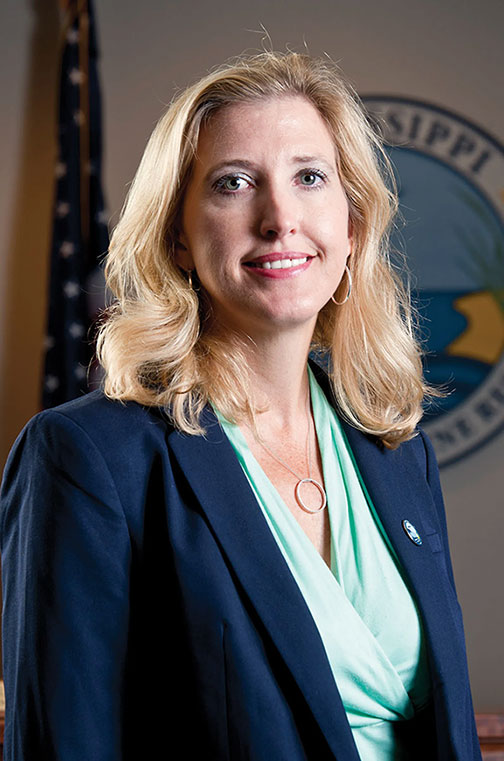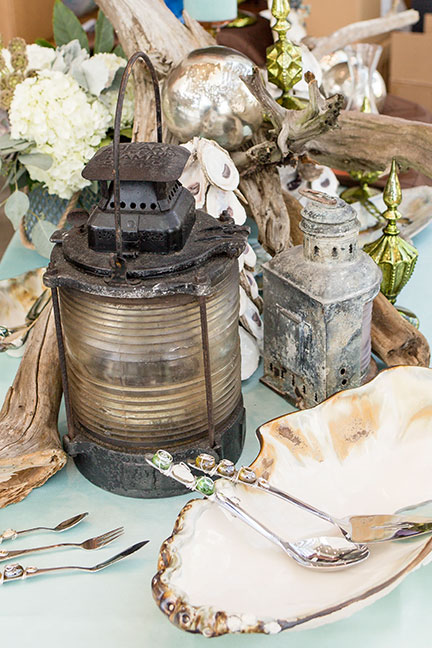Presented by// MS Seafood, Maritime & Seafood Industry Museum, Desporte and Son’s Seafood, and Quality Poultry and Seafood// Photography by Shannon Lutkins.
Gumbo, fried catfish, oyster dressing and shrimp any way you like it — that’s what a coastal Christmas is all about! To many on the Mississippi Gulf Coast, seafood is the go-to feature on holiday dinner tables as opposed to the traditional turkey and dressing. However, if you’re looking to round out your dinner table with a few new menu items, this section is full of recipes, tips on why buying local is best, and where to buy the freshest seafood. May your holidays be merry and bright, and full of bountiful blessings harvested right from our backyard waters!
From the Gulf to your plate
When looking for ways to shake up that turkey/ham tradition and embrace a more coastal Christmas, we’re fortunate to have access to the freshest seafood right at our fingertips. From late fall into early winter is a great time to enjoy succulent Gulf oysters. The cool water temperatures and good mixing of fresh and salt water make for a delicious treat on the half shell, off the grill, or in a savory dressing. Also, commercial shrimp are still coming in off the boats, and together with the oysters, you can make a tasty gumbo. Of course, the question then becomes do you eat your gumbo with potato salad on the side or a nice scoop right inside the bowl?
From the Gulf to your plate is what a coastal Christmas is all about, but it’s important to stay educated about the dos and don’ts of local vs. imported seafood. Gulf Coast Woman magazine chatted with Dr. Kelly Lucas, the chief scientific officer for the Mississippi Department of Marine Resources, to find out more.
 Q: WHAT IS THE IMPORTANCE OF BUYING LOCAL SEAFOOD?
Q: WHAT IS THE IMPORTANCE OF BUYING LOCAL SEAFOOD?
Buying local helps support our local fishermen and businesses. When you buy local, these fishermen, their families and their businesses continue to support the local economy through purchases in the community and this in turn helps create more jobs. Local products reduce environmental impacts through reduced transportation cost and additionally handling. And my favorite reason is because fresh local seafood tastes the best.
“As a consumer you should always ask where your seafood comes from. When you are dining in restaurants don’t assume the fish is local. Just because you are near the water does not mean that your fish came from that water. Local seafood is a healthy option and it promotes your community.”
— Dr. Kelly Lucas
Q: WHAT ARE SOME COMMON MISCONCEPTIONS PEOPLE HAVE ABOUT SEAFOOD?
Sadly, there are some people who think that fish from the Gulf is tainted from the Deep Water Horizon oil spill. Through numerous tests by Mississippi, other state and federal agencies and independent sources, we can confirm that Gulf seafood contains no oil and is safe to consume. From a consumption standpoint, America is the third largest consumer of seafood and roughly 90 percent of the fish and shellfish consumed is imported. Half of the imports are wild caught and half is aquaculture. The demand for seafood is increasing worldwide and the populations of wild fish are historically less. The shortfall from wild harvest is made up through aquaculture. Although the U.S. is a large consumer of aquaculture products, the majority of aquaculture products are imported. There are efforts underway in the U.S. and in Mississippi to increase aquaculture of marine species.
Recipes courtesy of MS Seafood
- Biloxi Butter
- Bloody Mary Oyster Shooters
- Mississippi Gulf Coast Lasagna
Q: WHAT ARE THE PROBLEMS OF BUYING IMPORTED SEAFOOD?
Some of the seafood imported into the United States are from illegal, unreported and unregulated fishing and some imports are mislabeled. Nationally, there are efforts underway to address these issues and find ways to ensure the seafood you consume is what you purchased and that the seafood was harvested in a safe and sustainable manner. Additional problems include that imported aquaculture products tainted with drugs and antibiotics banned in the U.S. or products infected with bacteria have been making it into the American market. Although imported seafood is inspected, only a small percentage gets scrutinized, inspected and tested. We recommend you choose fresh local harvested seafood. If local wild harvest or U.S. wild-harvest is not available, look for U.S. farm-raised products. The U.S. has strict regulations for aquaculture in our borders.
Crystal Seas Seafood, Pass Christian
- Chargrilled Oysters
- Shrimp and Crab Casserole
- Crab Cakes
Q: WHERE ARE SOME PLACES PEOPLE CAN BUY LOCAL SEAFOOD?
The Mississippi Gulf Coast offers many places to buy fresh seafood, including directly from fishermen at the docks, as well as local seafood markets. Local grocery stores also stock wild-caught Gulf seafood, but consumers must read the labels to make sure they are getting a local product and not an imported one.
Q: WHEN BUYING LOCAL SEAFOOD IN GROCERY STORES, ARE THERE CERTAIN LABELS PEOPLE NEED TO LOOK FOR?
When buying seafood some key things to ask or look for on the label include: Where is it from and is it wild-harvest or farm-raised? Keep in mind that some wild-harvest fish are caught in the U.S. and processed in foreign countries. New regulations nationwide look to close the gap on labeling so consumers can more easily identify the product, how and where it was harvested, and keep that information throughout the processing chain.
Desporte & Son’s Seafood, Biloxi
- Crabmeat Au Gratin
- Crabmeat Dressing
- Cajun Potato Salad
- West Indies Salad
Q: HOW DOES ONE CHOOSE THE BEST SEAFOOD?
One of the best tools for buying the best seafood is to find a good fishmonger, which is a person that deals in fish. You can find a fishmonger in your local seafood market and grocery stores. You should ask them questions about what is local, what is fresh and what is in season? They can also make substitute suggestions if you are looking for a particular fish.
Quality Poultry & Seafood, Biloxi
- Crabmeat Dip
- Seafood Bisque
- Shrimp Pasta Salad


